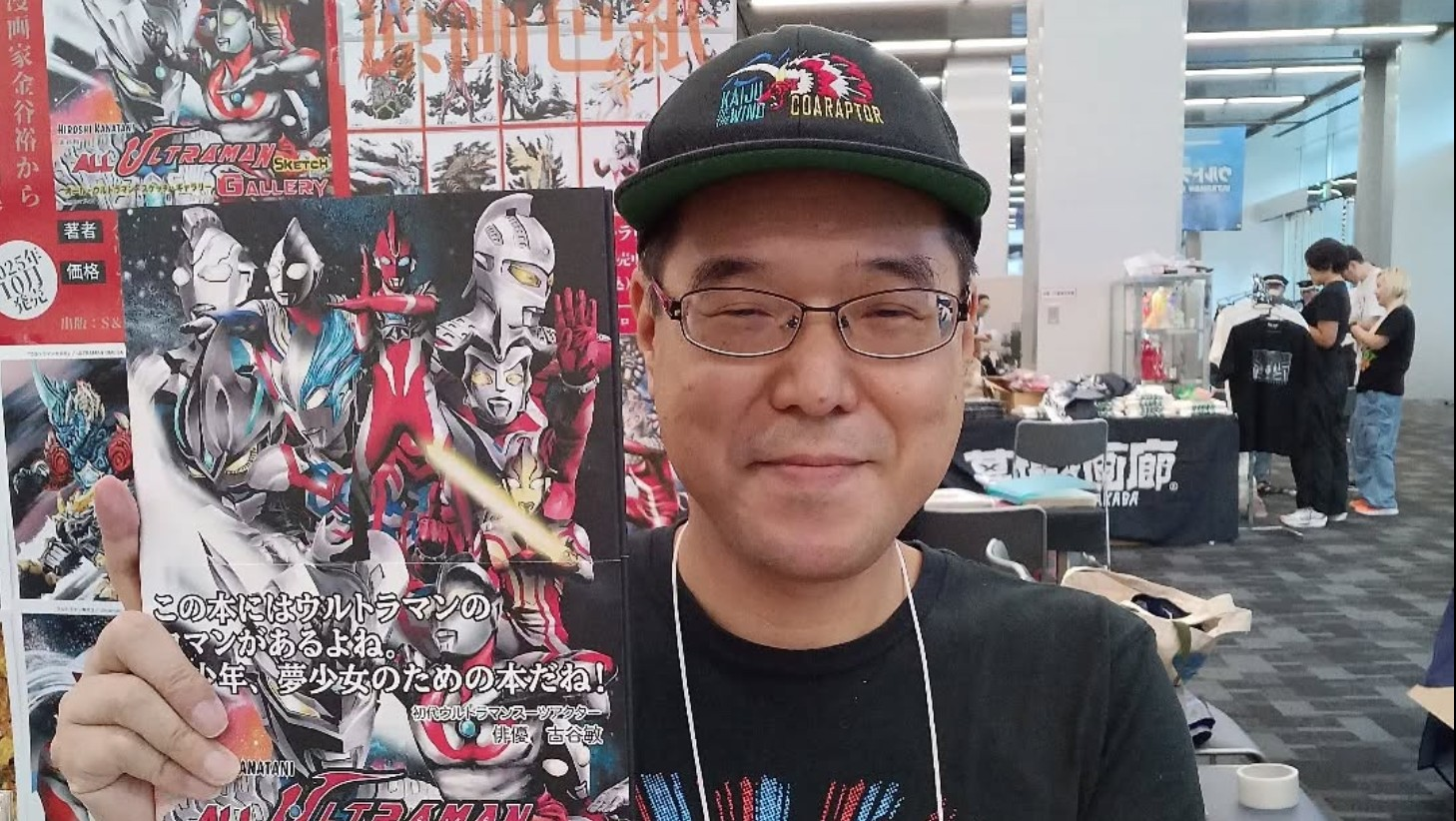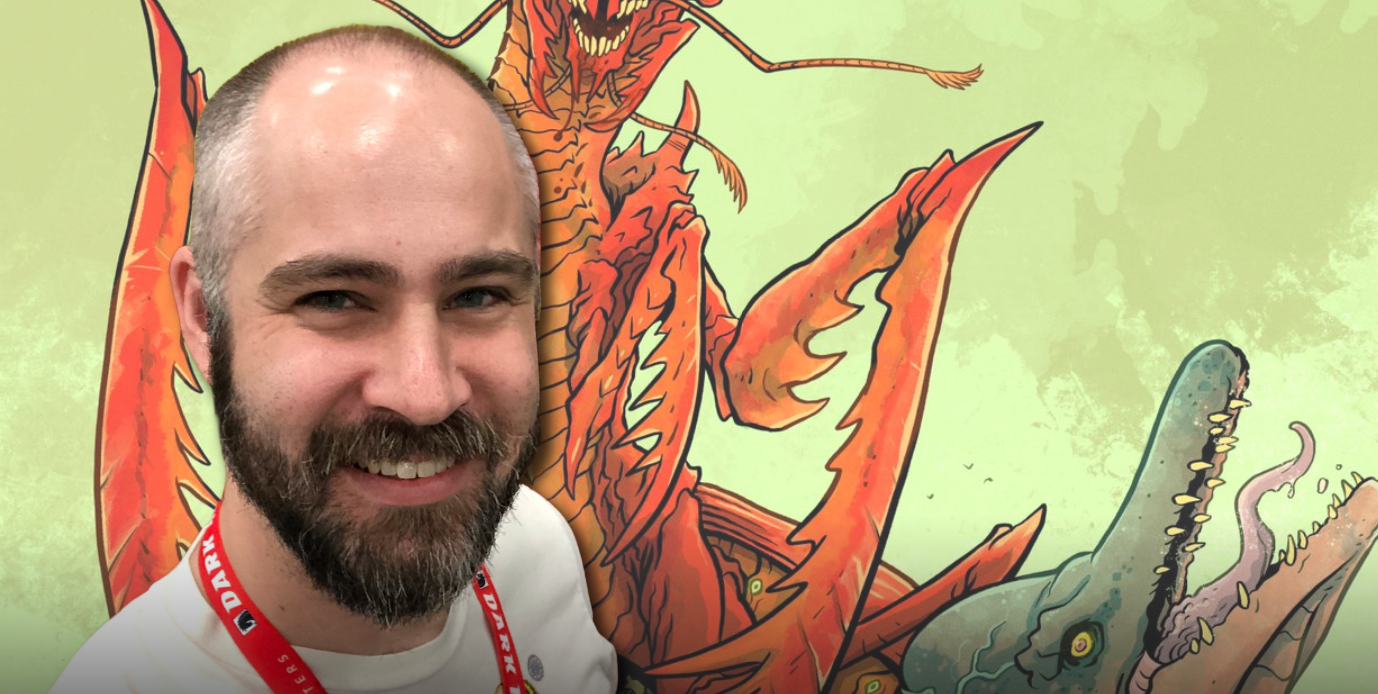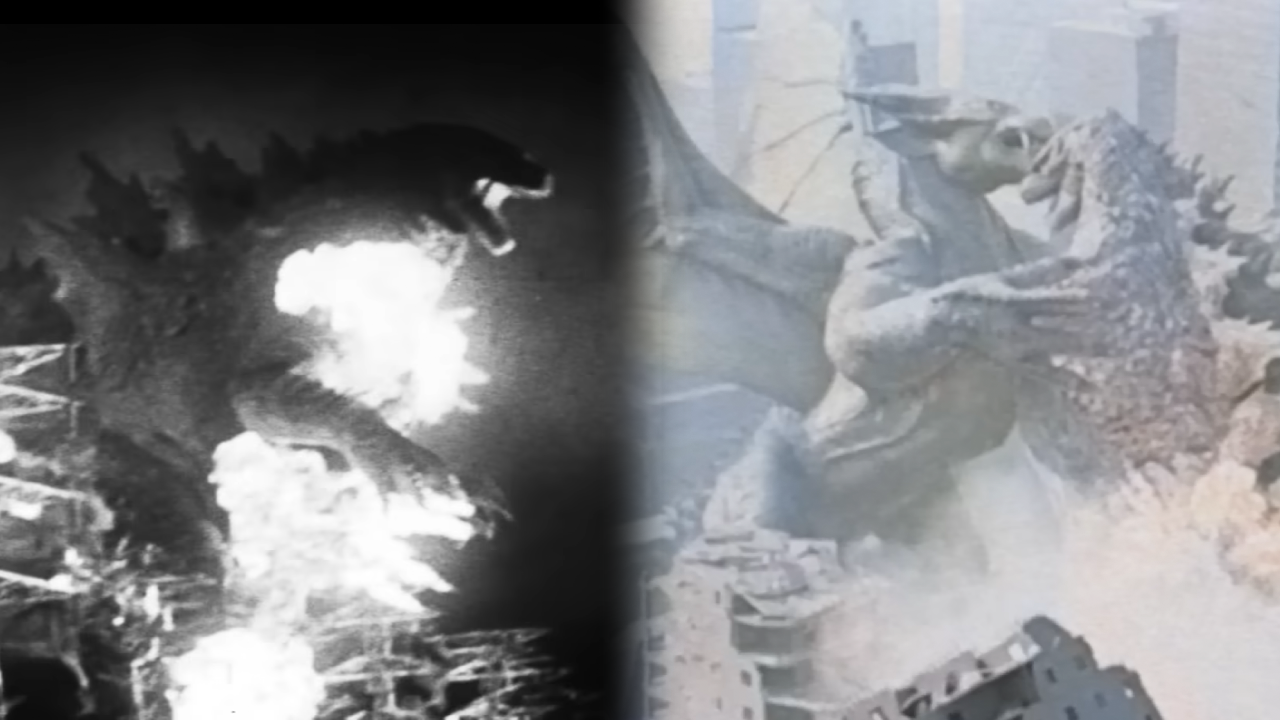Special Thanks to Jessica Tseang.
Many in the kaiju community are familiar with the works of Hiroshi Kanatani, one of the most frequent attendees at major kaiju conventions. With a friendly, cheerful attitude, he’s a constant force of positivity and true skill, and a rare opportunity for kaiju fans in the West to meet an artist from Japan. He’s also a holder of an even rarer title – an artist who can simultaneously publish officially licensed art from both Toho and Tsuburaya Productions simultaneously. Kaiju United had the opportunity to sit down with the legendary artist to discuss his upcoming art gallery, his new Ultraman art book, and some quick tips he has for aspiring artists.
Jacob Lyngle: Your first major professional work was in Hong Kong. Can you tell me more about it?
Hiroshi Kanatani: When I start to get a job, I asked to many publisher to make Kaiju or monster or action manga, every Japanese publisher said Kaiju and monster is not popular, then Hong Kong publisher asked me to make Hero manga, so I did. It was a manga about a girl who transforms into a hero and fight monsters. It became a serialized manga and got a prize in Hong Kong. After that some American cons invited me, I made Kaiju comics for some publishers, and Taiwan publisher asked me a Kaiju manga. Before I knew it, I was being called a Kaiju artist!
JL: You are releasing “HIROSHI KANATANI ALL ULTRAMAN SKETCH” for the 60th anniversary of Ultraman. How did you as an artist seek to convey six decades of Ultraman into this gallery? Is it every Ultraman? The most important ones?
HK: My new work “HIROSHI KANATANI ALL ULTRAMAN SKETCH GALLERY” has all Ultra series from “Ultra Q” to the most recent one “Ultraman Omega”. Actually, I talked with Tsuburaya production that I want to do every Ultraman, but they didn’t allow “Shin Ultraman”, “Ultraman Rising” “Neo Ultra Q” due to the copyright. Except them I draw all Ultraman. No one do every Ultraman because too many so I did. it’s my good challenge and I love to draw Ultraman and Kaiju anyway.

JL: Alongside “HIROSHI KANATANI ALL ULTRAMAN SKETCH,” there will be a gallery in November. What can visitors expect to see? Tell us about the gallery.
HK: My exhibition will be opened on November 22th – December 7th in Tokyo Odaiba. it’s a
Publication commemoration of my book but the exhibits are not only Ultraman but many many Tokusatsu works include Godzilla. The exhibit item will be over 150 works. I hope many Tokusatsu and kaiju fan enjoy them.
JL: Tell us about the international tokusatsu community you have witnessed at other events like in Saudi Arabia and Hong Kong. What do they seem to enjoy about tokusatsu? Is it similar to American fans of tokusatsu?
HK: Japanese Tokusatsu is very popular all over the world. But each country has their favorite tokusatsu titles. For example, the USA loves Godzilla the most, Asia (especially Hong Kong) loves Ultraman and Kamen Rider, Saudi Arabia loves Izenborg. Brazil loves Ultraman, and at the same time, Spectreman too. Recently, a company in Hong Kong asked me to do the toy box art of Red Baron; they sell very good. I can do any kind of Tokusatsu works, so I draw many titles for each country. Truthfully, I feel the fans are more passionate than Japan in some countries.

JL: Is there a character that you enjoy illustrating the most?
HK: I love to draw every character, especially Kaiju. The important part for me is how to entertain
everyone with my drawings.
JK: You frequently collaborate with artist Matt Frank. What is the best part about collaborating on a piece with Matt?
HK: I love to collaborate with Matt! He really loves tokusatsu and he’s very talented. We’re heading in the same direction, so it’s very fun to make plans with him. My favorite collaborations with him are manga works. Our biggest collaboration manga work is “Dinosaur War IZENBORG.” I want to do manga work with him again!
JL: Coaraptor: Kaiju of the Wind – what were your inspirations for the book? How did that project originate?
HK: A Texas publisher published the comic. So, I made a plan of Kaiju vs Kaiju, American history as Native American. Coaraptor a is Native American Kaiju, and he fight with enemy Kaiju of Texas social disaster. My story is a standalone story for each issue; very easy to understand for readers.

JL: What is the best advice you have ever received from a mentor?
HK: Kaiju manga artist Daiji Kazumine advised me on how to design a kaiju. He said, “What is the ability or skill of your Kaiju? What’s your concept? Once you decide them, then a good idea comes up.” Now I can make many character designs!
JL: What is YOUR advice for aspiring artists?
HK: Draw many things, show it to your friends, experience many artworks, and study a lot. All of your experiences will become your weapons.
JL: Lastly, what makes a compelling creature design? What about kaiju/monsters stands out
the most in your opinion?
HK: Good question. Every artist thinks about it for designing. I think the good design is one that lets you see the capabilities at a glance. But it has to be new. Baltan, Gan-Q in Ultraman, King Ghidorah in Godzilla, those creatures are very impressive. Everybody wants to know how scary the monster is, so we creators have to clear it at a glance. My comic, “Coaraptor Kaiju of the Wind,” has many kaiju. By looking at the individual’s form, we can understand what kind of disaster it will cause. I’m always struggling with new ideas, but it’s exciting and fun!





